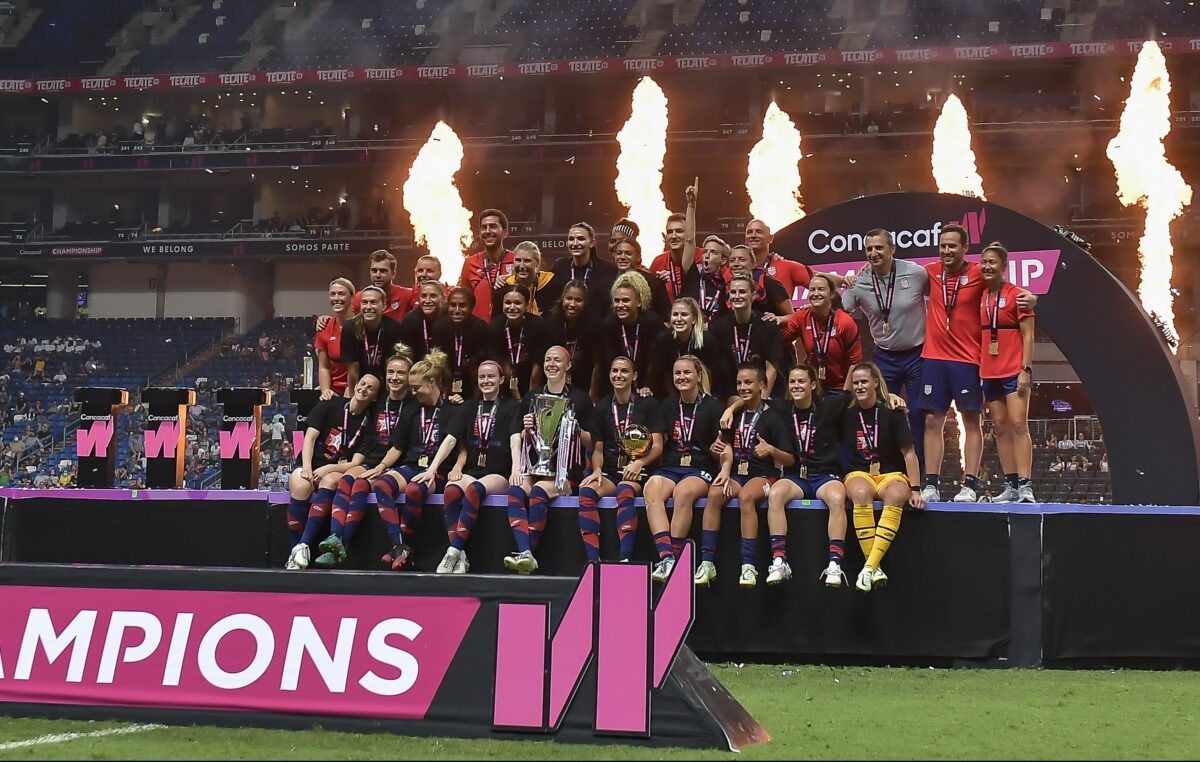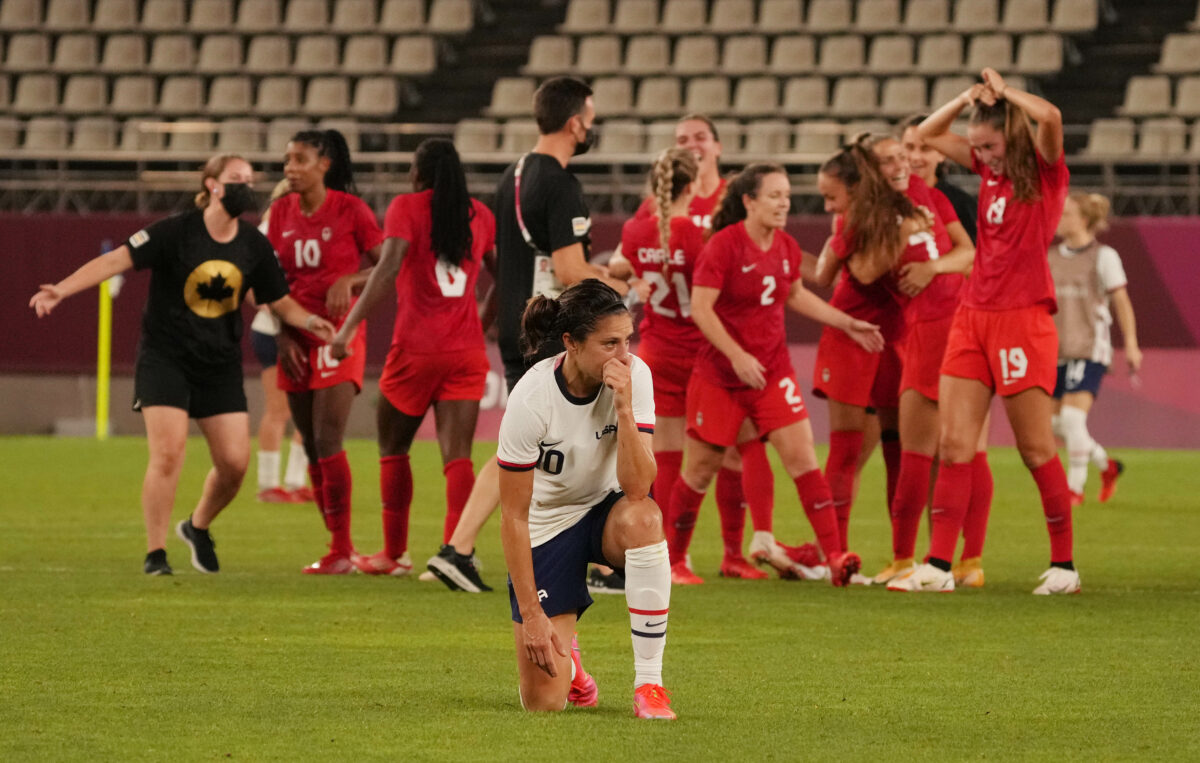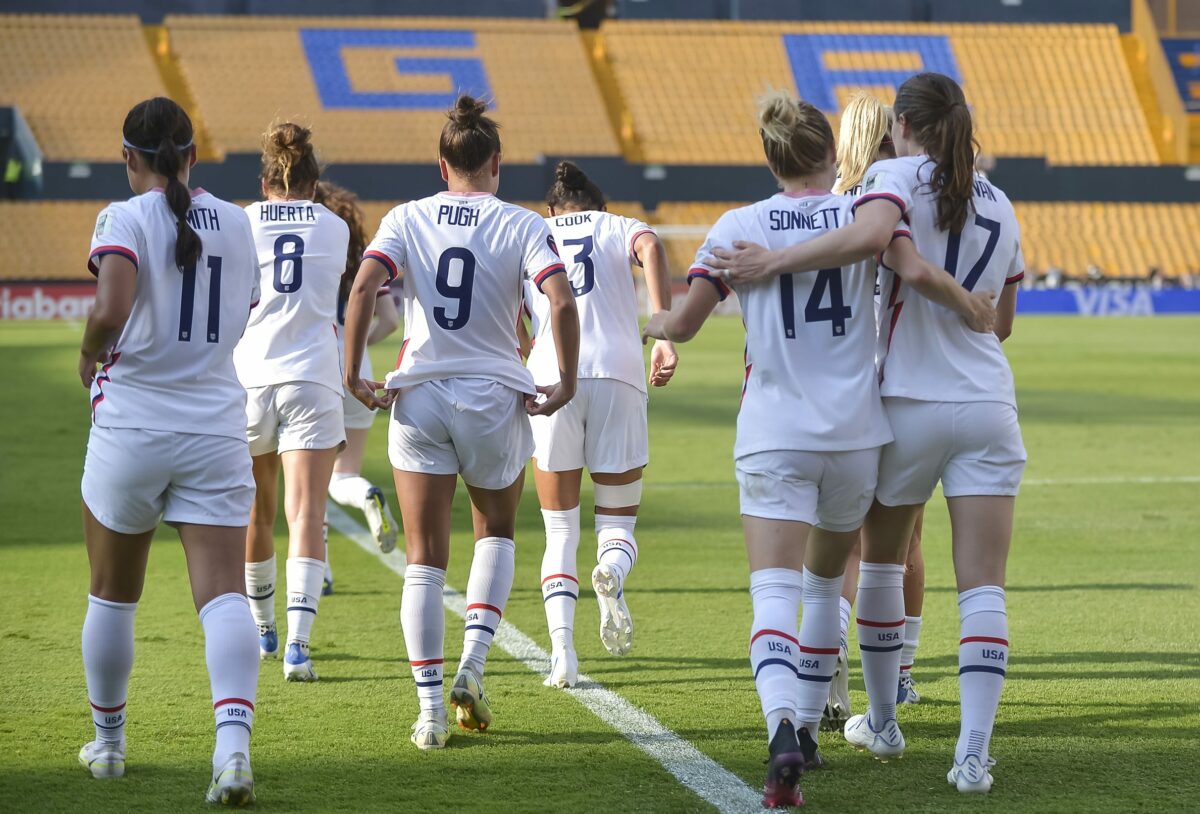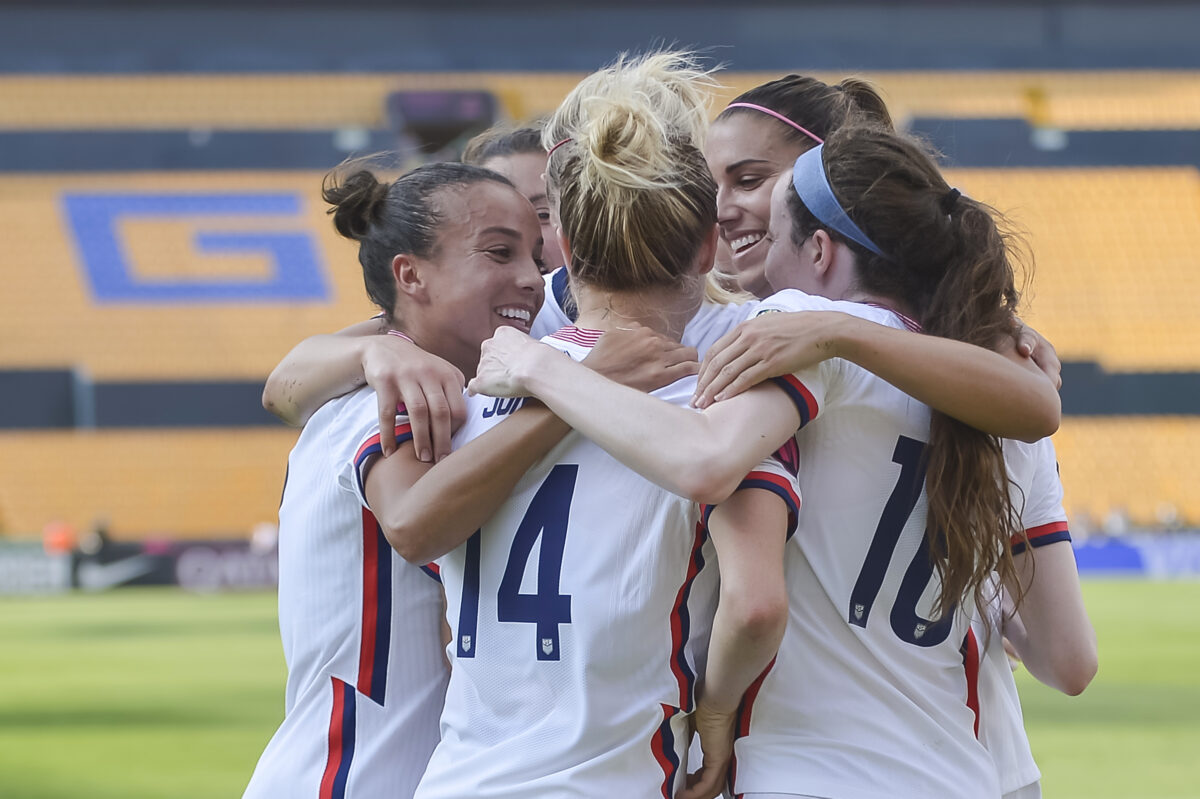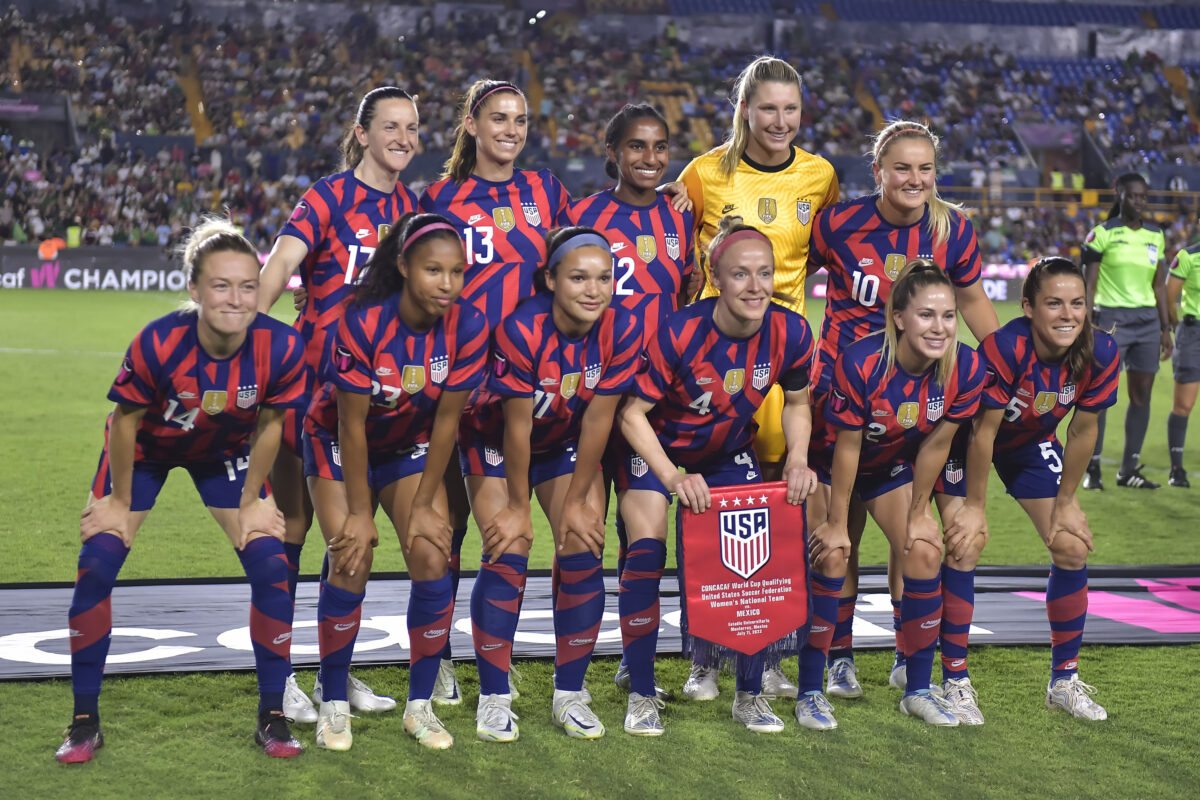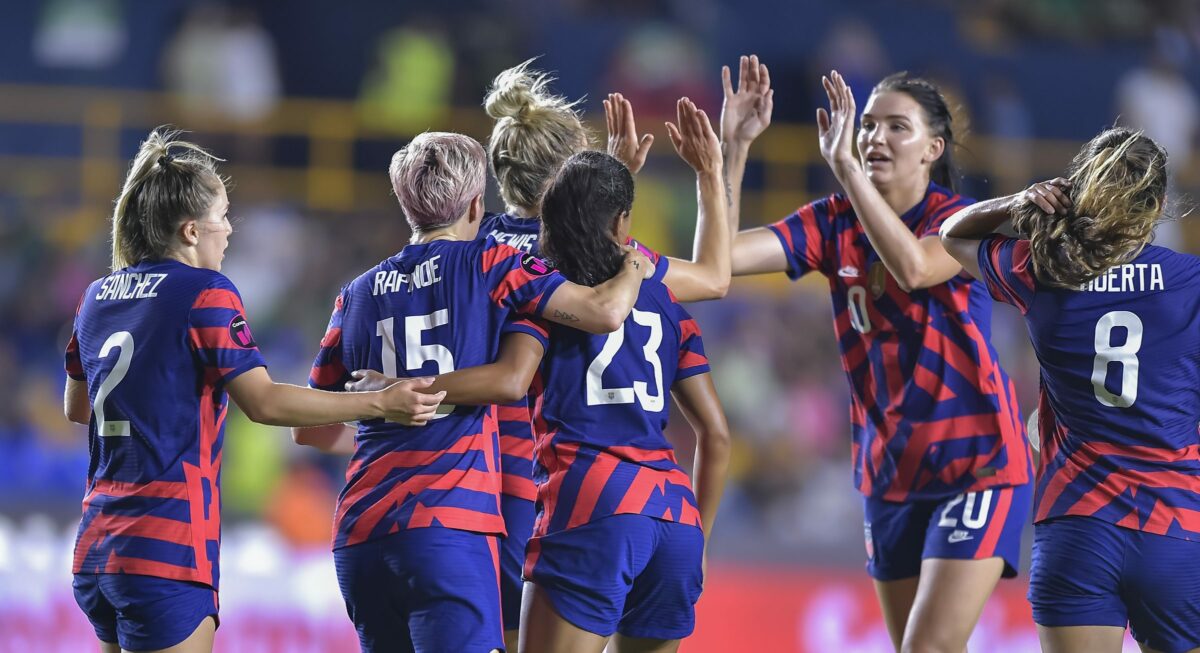The U.S. women’s national team did exactly what they meant to do at the CONCACAF W Championship, qualifying for the next World Cup and Olympic games.
They didn’t concede a single goal, extending a shutout streak in regional qualifying that goes back to 2010, and piled up chances on the attacking side in every game. In truth, outside of a rocky first half in their opener and some mild stress in the final 10 minutes of the final, it wasn’t a particularly difficult or dramatic tournament, which is frankly the expectation for the USWNT.
Here’s what we can take away from this return to big-tournament form:
Could’ve been easier
There’s certainly a strain of thought out there that disagrees with the idea that the USWNT had an easy time at the W Championship, and while there’s no 13-0 over Thailand to point to here, “easy” can still be applied in relative terms.
Let’s take the knockout games as an example. According to CBS soccer researcher Paul Carr, the USWNT’s knockout games against the defending gold medal winners (Canada) and a solid enough Costa Rica side saw those two teams create 0.61 expected goals over two games. That’s a smothering whole-team defensive effort, something that has been a hallmark of Vlatko Andonovski’s teams at the club level, and it was important here.
Why? Because the USWNT frankly left some goals on the table in almost every game (we have to say “almost” because, 2-0 up at halftime against Costa Rica, they focused on energy preservation against a foe that had effectively placed its bets on the third-place game before Ashley Sanchez expanded their lead in stoppage time).
The USWNT starting front line in this tournament features three players who have been on fire in NWSL play this season, and the only W Championship game that was played at an NWSL level by both teams was the final. With that in mind, you’d think the scorelines would be pretty wild, but Sophia Smith, Alex Morgan, and Mallory Pugh were all a bit less clinical than they are with their club teams.
That’s not to say they were poor; their movement and ability to generate big chances bought the USWNT plenty of space elsewhere, as most of their opponents dropped off either at kickoff or, in Canada’s case, as the game wore on. But if we’re seeing the Thorns/Wave/Red Stars version of this trio in CONCACAF, the story of this tournament would have ended up being “wow the U.S. really clobbered everyone,” rather than “well that was mostly good, could have been better.”
Generational shift in progress
Speaking of Pugh and Smith, they represent a much-discussed generational shift. Andonovski said he wasn’t going to bring Christen Press to this tournament even before her torn ACL, he didn’t call Tobin Heath in after a year spent largely dealing with injuries, and Megan Rapinoe only played 73 minutes in five games.
However, the generational shift is less clear in some other places, which is why it’s still very much ongoing rather than fully complete. Morgan held off Ashley Hatch’s challenge as the team’s No. 9 (though to keep the job once Catarina Macario recovers from a torn ACL of her own, she’s going to have to arguably take her play one step further), and in defensive positions there’s still very much a preference for some veterans.
In goal, Andonovski went back and forth between Casey Murphy and Alyssa Naeher, making the rare (at least for the USWNT) choice of continuing to toggle even when faced with a consequential game. It feels from the outside like Naeher is still first choice, but it also feels like there’s at least some thought to whether her name has gone from ink to pencil on the team sheet.
The USWNT also has Naomi Girma making an excellent case for a starting role, as the San Diego Wave rookie’s distribution and ability to read plays early solves so many problems for the team. Andonovski doesn’t appear quite ready to make that jump yet, though, with Girma only getting two starts and playing only 210 minutes. CONCACAF still named her to the tournament’s Best XI, but against Canada Andonovski preferred the experience and size advantage from Alana Cook and Becky Sauerbrunn.
We may see the shift continue in the future, but the veterans aren’t just going to hang it up. Press has time to recover before the World Cup, Heath is playing in NWSL, Abby Dahlkemper is back from an injury that kept her off the roster, and Crystal Dunn wasn’t in consideration for this tournament after giving birth.
In other words, getting into the USWNT is still women’s soccer’s biggest challenge. Same as it ever was.
What’s the plan at the six?
One thing the USWNT hasn’t quite shifted yet is what they want out of the defensive midfield position. Sullivan and the former incumbent, Julie Ertz, play this role very differently. Sullivan is a ball-dominant distributor and tempo-setter for the Washington Spirit, whether she drops deep alongside the center backs or not. She’s at her best controlling play and occupying spaces that make it harder to play through her entire team’s structure.
Ertz, meanwhile, has always had more freedom to barrel out of deeper positions to win the ball, and is arguably better at that than any USWNT player ever. It’s a more hands-on, direct style of defending in the midfield, and part of the exchange is that she doesn’t set the team’s tempo on the ball or play that many game-breaking diagonals. That task was left to center backs and the rest of the midfield.
One major issue for the USWNT at the Olympics last year was ultimately that Andonovski seemed to place his bets on asking Lindsey Horan to do an Ertz impersonation rather than adapt to Sullivan’s playing style, which did not work out. Sullivan was left home, and the U.S. never looked like themselves in Tokyo, even when Ertz did return from a knee injury to play.
Fast forward a year, and things are better for sure, but it does still feel like the USWNT wants anyone playing the No. 6 to do their best Ertz impression. Sullivan sees less of the ball with the USWNT, which leads to things like Cook completing 102 passes (almost all sideways rather than forward) against Haiti. Even when the USWNT gave Sullivan a rest and deployed Horan or Kristie Mewis in defensive midfield, there are seemingly explicit instructions to send the other two midfielders further forward, which means a lone defensive midfielder gets into all-or-nothing tackles on a more regular basis.
That’s Ertz’s game, and it feels like this is a big next step for the USWNT. Do they want to keep the system that worked for one unique player in place, or do they want to start to adapt to the players that are available? It’s not like Sullivan’s skill set is inapplicable to the USWNT’s needs, what with how often they’re facing low blocks, how much possession they have.
The coaching staff needs to seriously consider whether it wants to remain in a system built for Ertz (who in the Covid-19 era has played just 629 minutes of NWSL and national team soccer), or if they want to tailor the approach for Sullivan. From the outside, it seems like it’s been time to make that latter adjustment for a good while now.
[lawrence-related id=4884,4870,4856]
